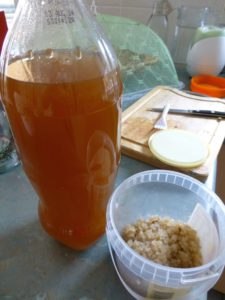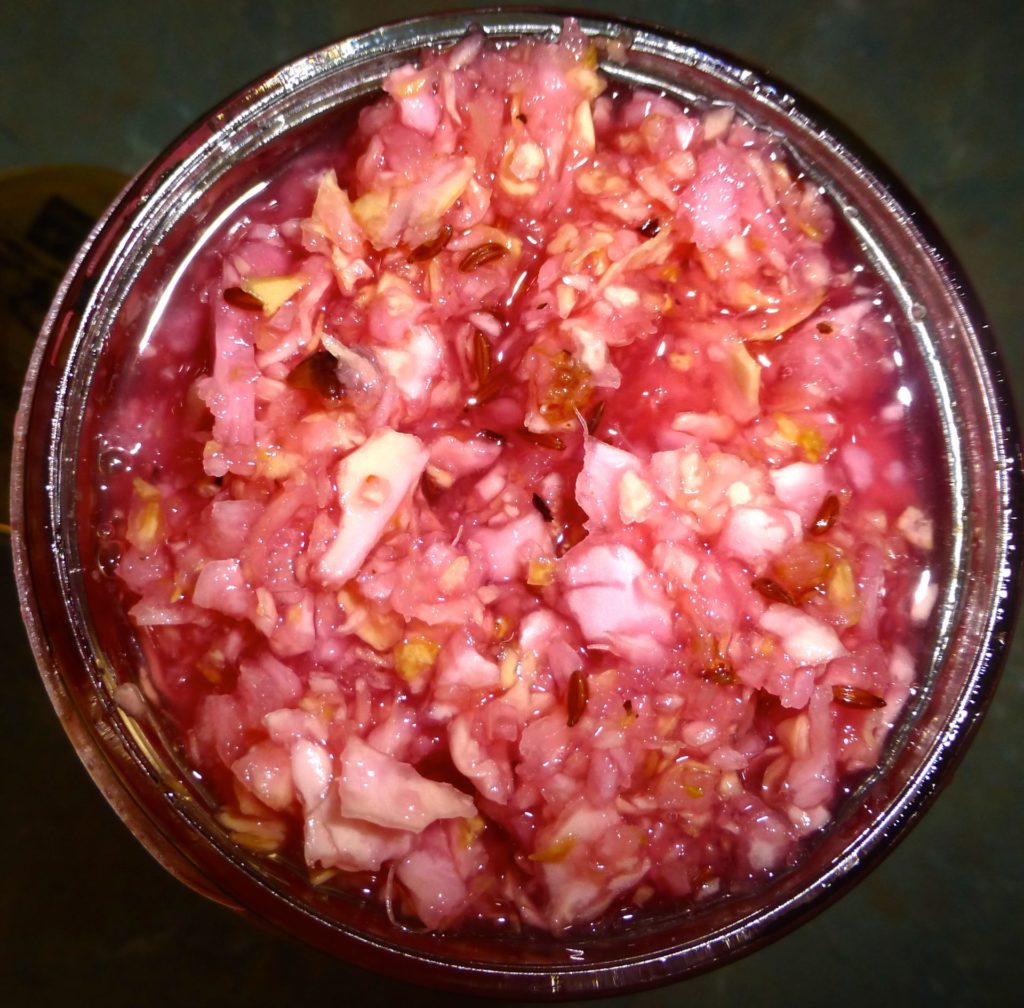Fermented Foods – a new paradigm?
Peaceful co-existence with microbes rather than warfare?? Is it possible? It’s a radical thought but one that’s growing amongst the whole-foodists, paleos, home-cooking advocates, cutting edge nutritionists and all the other rebels, skeptics and change agents questioning the prevailing wisdom around the so-called food we currently eat.
But why are we interested in microbes anyway? Yes, microbes create infection. Yes, microbes cause rotting, decaying food and flesh (oh, the smell!) but microbes also make beer, cheese, bread, salami and sauerkraut!
Microbes are actually essential to life and without them – in our guts, on our skin and in our foods, we’d be dead. Literally, humanity wouldn’t exist!
The process of fermenting foods – to preserve them, to make them more digestible, nutritious and delicious, is as old as civilization itself. Fermented foods are a powerful aid to digestion and a protection against disease. The controlled manipulation of the microbe’s environment enables the fermenter to promote desirable fermentation products rather than rot. Once these almost-magical creations are ready for consumption all kinds of culinary delights can be created.
I have a fond memory growing up of Dutch Rookwurst sausage, mashed potato and sauerkraut. My Dutch mother served this special meal, periodically. I remember picking at the sauerkraut and thinking skeptically, “what is this strange concoction?” but remarkably, I ate it. It’s remarkable because I was an extremely fussy eater and fermented foods are usually an acquired taste. But, the tang of sauerkraut with the bland potatoes elevated the mixture of the two to something beyond the ordinary. Perhaps something primal had kicked in.
A Brief History
The history of fermentation is quite fascinating. All cultures used fermentation either for pleasure, as in the case of alcoholic beverages, for preservation – refrigerators did not exist back then; and many other reasons including survival. To be able to make sour dough bread from just flour and water saved many cultures from starvation in difficult times.
However, our culture is terrified of germs and obsessed with hygiene. Supermarket shelves full of anti-bacterial this and that is testimony to this. However, we are beginning to realize that health and homeostasis require that humans coexist with microorganisms. Humans evolved from and with microorganisms and we cannot live without them.

What are the Healthy Benefits?
By now you’re wondering, how can fermented foods help me? Primarily fermented foods are beneficial in 3 ways:
1) Their nutrient content is increased during fermentation. When we consume greater levels of B-vitamins and antioxidants our bodies are better equipped to deal with the daily challenges to our health. One of the major benefits is a strengthened immune system.
2) They add taste to your plate. Pleasure is an important aspect of eating. However in modern times most of the pleasure of eating has come from sugar, salt and often artificial flavours. Fermented foods add a depth and richness to the array of flavours associated with natural, whole foods.
3) They contain beneficial microorganisms that help your digestive system break down and assimilate nutrients. Aiding digestive function by optimizing the gut environment, especially pH, and harmonizing the balance between harmful and beneficial bacteria is probably the most significant benefit of the regular consumption of uncooked fermented foods. Not all fermented foods are alive when you eat them. Breads, for example, are cooked and therefore the organisms present have been killed.
Improved digestive function and assimilation of nutrients can have multiple benefits in the body, stronger immunity, clearer skin, improved bowel habits, even better hormonal balance. But like all tonics, it’s the frequent daily consumption that is important.
What are fermented foods?
The difference between a fermented food and a rotten food can be quite subjective. We in the West are familiar with blue vein cheese and many people enjoy it but other cultures may ferment fish or meat instead and, as these are new to us, we are disgusted at the thought!
Having said that, there are some basic guidelines. For example, how do you turn cabbage into sauerkraut and not compost? Well, it helps to follow a recipe, as the guidelines will lead you in the right direction but basically, as is the case with cabbage, it’s about the oxygen. Cabbage that is fermented is buried underwater (or cabbage juice) and salt; only the bits exposed to oxygen start to rot. So it’s important to follow directions!
Some say that any food can be fermented. However, the typical foods you’ll be familiar with are yoghurt, bread, cheese, sauerkraut, beer and wine. Others that you may be less familiar with are miso, tempeh, kimchi, apple cider vinegar, wine vinegar, kefir, kombucha, capers, pickled vegetables, sourdough and so on.
Basic Cabbage Kimchi
Timeframe: One week (or longer)
Ingredients (for 1 litre)
- Sea salt
- 500gms Chinese cabbage
- A few red radishes
- 1 large carrot
- 1-2 onions, leeks, chives or spring onions
- 2-4 cloves of garlic (or more!)
- 3-4 red hot chillies, fresh or dried (to taste)
- 3 tbs fresh grated ginger
Method
- Mix a brine of about 1 litre of water and 3-4 tbs of salt. Stir well to thoroughly dissolve the salt. The brine should taste good and salty.
- Coarsely chop the cabbage, slice the radish and carrots, and let the vegetables soak in the brine, covered by a plate or other weight to keep the vegetables submerged, until soft, a few hours or overnight. Add other vegetables to the brine, such as snow peas, seaweeds, bean sprouts, Jerusalem artichokes, anything you like.
- Prepare spices: grate the ginger; chop the garlic and onion’ remove seeds from the chillies and chop or crush, or throw them in whole. Kimchi can absorb a ot of spice. Mix spices into a paste.
- Drain brine off vegetables, reserving brine. Taste vegetables for saltiness. You want them to taste decidedly salty but not unpleasantly so. Rinse or add salt accordingly.
- Mix the vegetables with the spice mixture paste. Mix everything together thoroughly and stuff it into a clean litre jar. Pack it tightly into the jar, pressing down until brines rises. If necessary, add a little of the reserved vegetable soaking brine to submerge the vegetables. Weight the vegetables down with a smaller jar or a zip-lock bag filled with some brine.
- Ferment in your kitchen or other warm place. Taste the kimchi every day. After about a week of fermentation, when it tastes ripe, move it to the refrigerator.
